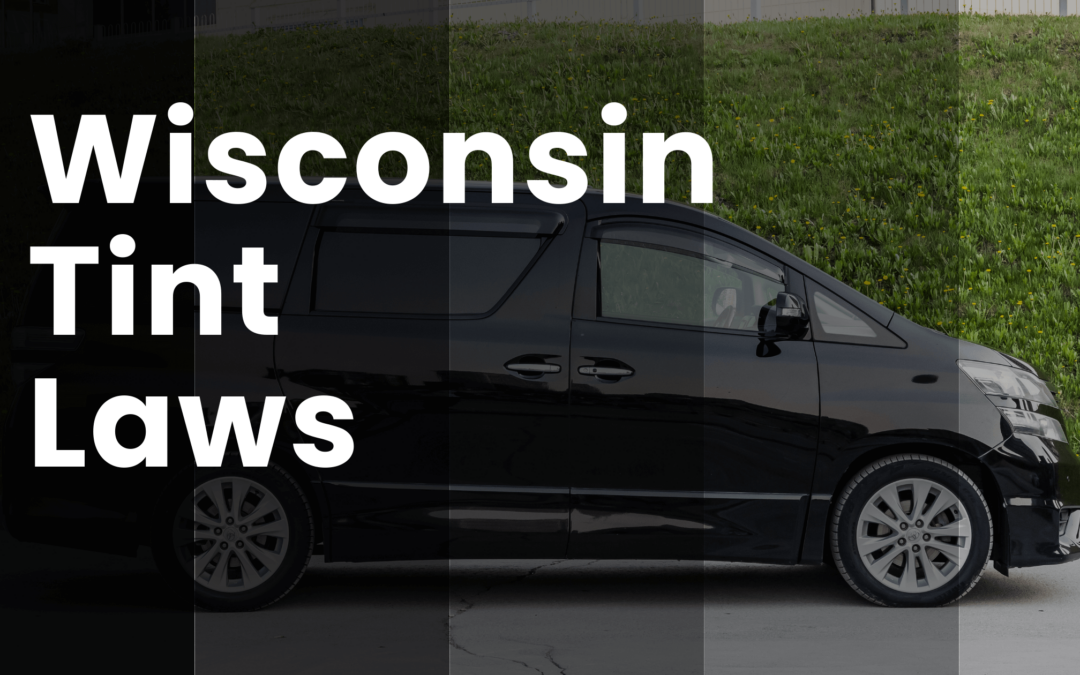Wisconsin Tint Laws
Wisconsin’s car window tinting laws, established in 1996, come with specific requirements for windshields, front side windows, back side windows, and rear windshields. These regulations aim to govern the darkness and reflectivity of window tints. To help you navigate these laws, we’ve provided a detailed overview.
Disclaimer
While I have a background in commercial law and strive to provide accurate and informative content, it’s important to note that I am not a legal expert. The information presented in this blog is based on my interpretation of the subject matter, and laws can vary by location and change over time. It is strongly recommended that readers verify all sources of information and consult with legal professionals or relevant authorities before making any decisions related to tint laws.
Understanding the Terminology Regarding Tint Laws
The most important part of the legislation is understanding what VLT is and how law enforcement services check or test the percentage.
What is VLT
VLT, or Visible Light Transmission, is a measure of the amount of visible light that can pass through a window tint or film. It is commonly used to determine the darkness or opacity of window tints, and it’s an important factor in window tinting laws and regulations.
VLT is typically expressed as a percentage. For example, a window tint with a VLT of 20% allows only 20% of visible light to pass through, making it relatively dark and less transparent. Conversely, a window tint with a VLT of 70% allows 70% of visible light to pass through and is much lighter and more transparent.
How do Law Enforcement services test the VLT percentage?
Window tinting laws vary by jurisdiction, and they often specify the maximum allowable VLT for different types of windows on a vehicle, such as the front windshield, front side windows, rear side windows, and rear window. These laws are designed to ensure that drivers have adequate visibility and that law enforcement can see into vehicles for safety and identification purposes. The manner that they go about testing the VLT is by using a VLT gauge/meter.
Here is a YouTube Short from @TrafficServices and @TorontoPolice showcasing the device and how it works. Even though it is in Canada, it still is helpful to understand how the tint darkness is measured.
Window Tint Darkness in Wisconsin:
Wisconsin’s laws specify the permissible Visible Light Transmission (VLT), which is the percentage of visible light allowed through car windows. These regulations differ for various vehicle types, such as sedans, SUVs, and vans.
Wisconsin Car Tint Law For Sedans:
- Windshield: Non-reflective tint is allowed above the manufacturer’s AS-1 line.
- Front Side windows: They must permit more than 50% of light.
- Back Side windows: These windows should allow more than 35% of light.
- Rear Window: A minimum of 35% light transmission is required.
Tint Law For SUVs and Vans in Wisconsin:
- Windshield: Non-reflective tint is allowed above the manufacturer’s AS-1 line.
- Front Side windows: They must allow more than 50% of light.
- Back Side windows: Compliance mandates that more than 35% of light passes through.
- Rear Window: The rear window must also allow more than 35% of light.
| Type of Window | Sedans | SUVs/Vans |
|---|---|---|
| Windshield | Non-reflective tint above AS-1 line | Non-reflective tint above AS-1 line |
| Front Side Windows | Must allow more than 50% of light | Must allow more than 50% of light |
| Back Side Windows | Must allow more than 35% of light | Must allow more than 35% of light |
| Rear Window | Must allow more than 35% of light | Must allow more than 35% of light |
Window Tint Reflection in Wisconsin:
Window tints can reflect incoming light, helping to reduce glare and heat. Wisconsin’s window tint law specifies permissible window reflection for tinted windows:
Reflectivity Tint Laws For both sedans and SUVs/vans:
- Front Side windows: The tinting film must not exhibit a reflective quality.
- Back Side windows: Reflective properties are also prohibited in the tinting film.
Additional Wisconsin Window Tint Rules and Regulations:
Wisconsin’s window tinting laws come with additional regulations that are equally important:
Side Mirrors
If the rear window is tinted below 60% VLT, dual side mirrors are required.
Restricted Colors
Wisconsin does not place restrictions on tint colors.
Tint Variance
A 3% variance is allowed in tint darkness.
Certificates
Film manufacturers are not obligated to certify the film they sell in the state.
Stickers
The law does not require stickers to identify legal tinting.
Medical Exceptions
Wisconsin allows medical exemptions for the use of darker tint.
Regulations for Out-of-State Drivers
The same regulations apply to out-of-state drivers as those for drivers living in the State.
If you are from States such as Michigan, Illinois, Iowa, and Minnesota, you are expected to abide by these laws and regulations.
It’s important to keep in mind that interpretations of Wisconsin’s tinting laws may vary based on your county or place of residence. To ensure full compliance, we strongly recommend double-checking this information with your local DMV or law enforcement authorities.
Our information regarding window tint laws in Wisconsin was last updated in 2023. We are dedicated to providing accurate and current information about window tint laws. If you come across any inaccuracies or outdated data, please feel free to reach out. Your trust in our resources is highly valuable, and we are committed to offering the most reliable information available.

